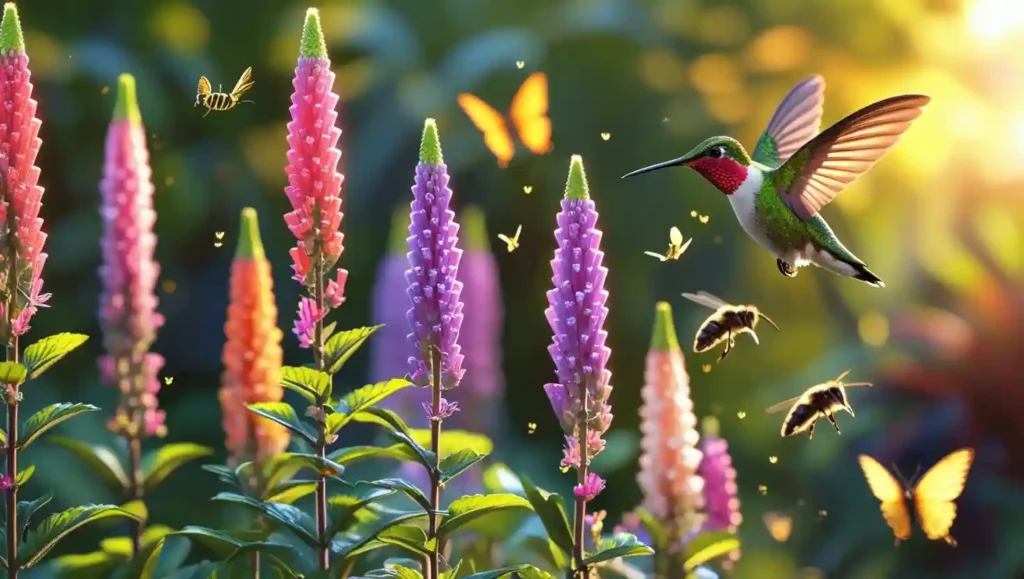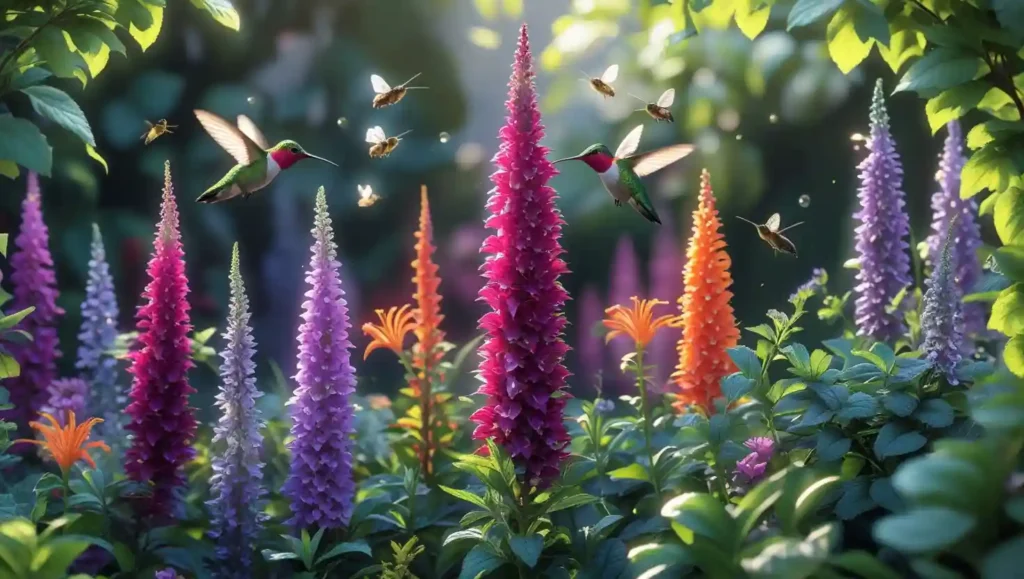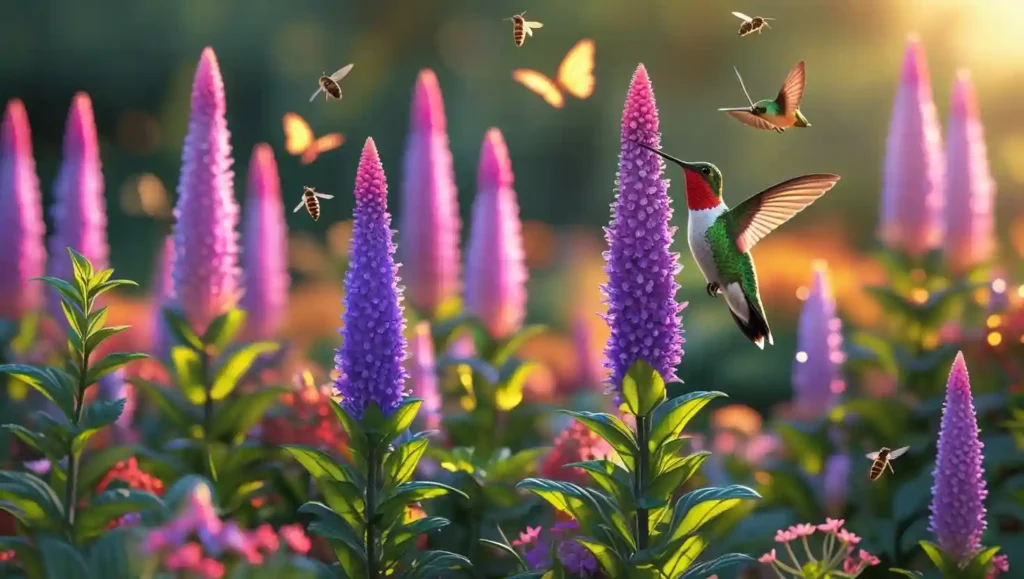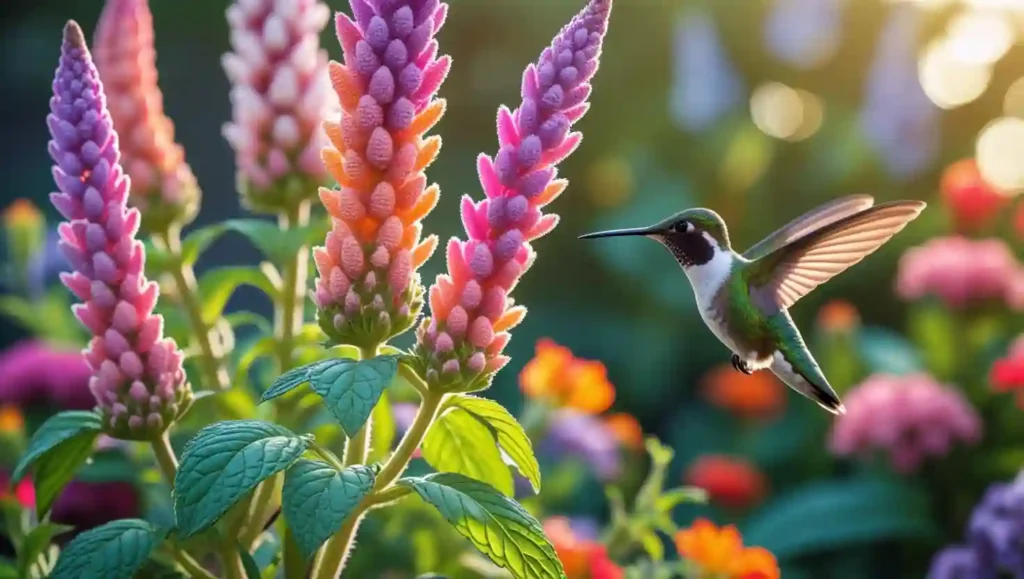The hummingbird mint plant is a stunning perennial that will not only bring bright color to your garden, it also draws pollinators, such as butterflies and hummingbirds. The plant is known for its long-lasting flowers as well as its fragrant foliage and low maintenance. The plant is loved by landscapers and gardeners. It doesn’t matter if you want to create an environment that is pollinator-friendly or bring a touch of class to your landscape, the hummingbird mint is a great option.
What is a Hummingbird Mint Plant?
The hummingbird mint plant (Agastache) belongs to the family of mint (Lamiaceae) . It is admired for its aromatic leaves and tubular flowers. Originating from North America, this hardy perennial is able to thrive in a variety of climates and is renowned for its drought-resistant. It produces spiky, tubular blooms in shades of orange, pink, red and purple and is visually appealing to people who garden and those who pollinate.
Why Choose the Hummingbird Mint Plant for Your Garden?

Adding a hummingbird mint plant to your landscape offers numerous benefits:
- Attracts Pollinators – As the name suggests, this plant is a magnet for hummingbirds, butterflies, and bees, making it an essential choice for a pollinator-friendly garden.
- Drought Tolerant – The hummingbird mint plant thrives in dry conditions, making it perfect for low-water landscapes.
- Long Blooming Season – It flowers from early summer to late fall, providing continuous color for months.
- Aromatic Foliage – The leaves of the this plant emit a pleasant minty, anise-like fragrance, adding sensory appeal to your garden.
- Deer and Rabbit Resistant – The strong scent of the plant helps deter deer and rabbits, making it a low-maintenance addition to your garden.
Ideal Growing Conditions for the Hummingbird Mint Plant
To ensure that your this plant thrives, it’s essential to provide the right growing conditions.
1. Soil Requirements
This plant favors well-drained soil with an alkaline to neutral PH. Sandy or loamy soils are perfect, as it helps prevent waterlogging that can cause root decay. If you’re in the middle of clay soil, you should consider amending it with compost or sand to increase drainage.
2. Sunlight Needs
To get the most beautiful flowers for the best blooming results, this plant in full sunlight. It needs at least six hours of sunlight every day. Although it is tolerant of some shade, too much shade can result in fewer blooms and a leggy growth.
3. Watering Requirements
While this plant can withstand drought once it is established, regular watering throughout the initial period of growth is crucial. After its establishment, it just requires occasional watering, particularly in dry periods that last for a long time. Avoid excessive watering because this could cause root decay.
4. Temperature and Hardiness
This plant is robust to USDA zones 5, 10 and. It is resistant to cold and moderate frost, which makes it able to adapt to a variety of climates. If you reside in a colder area and want to add mulch around the base of your plant in winter will aid in protecting the roots.
How to Plant and Care for the Hummingbird Mint Plant

1. Planting the Hummingbird Mint Plant
- Choose a location with full sun and well-draining soil.
- Dig a hole twice the size of the root ball and loosen the surrounding soil.
- Place the this plant in the hole, ensuring that the top of the root ball is level with the ground.
- Fill the hole with soil and water thoroughly to help establish roots.
- Space plants about 18-24 inches apart to allow for proper airflow and growth.
2. Pruning and Maintenance
- Deadhead spent flowers to encourage continuous blooming throughout the season.
- Cut back the this plant in late fall or early spring to promote fresh growth.
- Remove any diseased or dead foliage to maintain plant health.
3. Fertilizing Needs
This plant doesn’t require a lot of fertilization. A gentle application of compost or a balanced fertilizer at the beginning of spring can encourage the growth of healthy plants and encourage flowering. Avoid over-application of nitrogen because it could cause an excessive growth of foliage, which can result in smaller flowers.
4. Pest and Disease Control
Although generally resistant to pests This plant is sometimes a magnet for aphids or spider mites. If you notice that pests are a problem you can use insecticidal soap or neem oil for control infestations. Root rot is the most frequent illness that affects this plant and can be avoided by ensuring adequate drainage.
Popular Varieties of the Hummingbird Mint Plant

There are a variety of stunning types of the hummingbird mint plant that have distinctive shades and traits.
1. Agastache ‘Blue Fortune’
This variety produces soft lavender-blue flowers and is a favorite among pollinators. It thrives in well-drained soil and full sun.
2. Agastache ‘Tango’
With vibrant orange flowers, this compact variety is perfect for containers and small gardens.
3. Agastache ‘Ava’
A taller variety, ‘Ava’ boasts striking magenta-pink flowers and is highly attractive to hummingbirds.
4. Agastache ‘Golden Jubilee’
Featuring golden-yellow foliage and purple-blue flowers, this variety adds a unique contrast to garden landscapes.
Companion Planting with the Hummingbird Mint Plant
The hummingbird mint plant pairs well with other drought-tolerant and pollinator-attracting plants. Consider planting it alongside:
- Lavender – Complements the fragrant foliage and attracts more pollinators.
- Echinacea (Coneflower) – Provides additional color and nectar sources for bees and butterflies.
- Russian Sage – Adds a similar texture and color palette to garden borders.
- Salvia – Another hummingbird favorite that thrives in dry conditions.
Using the Hummingbird Mint Plant in Landscaping
The hummingbird mint plant is versatile and can be used in various landscaping styles:
- Pollinator Gardens – A must-have for attracting hummingbirds and beneficial insects.
- Rock Gardens – Thrives in dry, rocky environments.
- Container Gardening – Perfect for patios and small spaces.
- Borders and Edging – Adds height, color, and fragrance to garden borders.
Medicinal and Culinary Uses of the Hummingbird Mint Plant
Beyond its decorative significance. This plant has traditionally been utilized for culinary and medicinal uses.
1. Medicinal Benefits
Hummingbird mint plant leaves are used for teas made from herbal ingredients to help digestion, ease coughs, and ease stress. The plant has natural anti-inflammatory and antimicrobial properties which makes it an ideal supplement to natural remedies.
2. Culinary Uses
The fragrant flowers of this plant give the anise or mint flavor to salads, teas, and desserts. These edible plants can serve as a garnish to drinks and food.
Final Thoughts: Why You Should Grow the Hummingbird Mint Plant

The Hummingbird mint plant is a wonderful garden ornament that provides beauty, scent as well as ecological advantages. If you’re looking to attract pollinators, design an area that is drought-resistant or just enjoy its herbaceous uses, this plant can be an attractive feature to your landscape.
With its simple-care characteristics, beautiful flowers, easy-care nature, as well as its resistance to drought and pests. This is a must for gardeners who wish to add some beauty to their outdoor areas. If you’re looking to bring color, fragrance along with wildlife in your yard, think about installing the Hummingbird mint plant right now!
